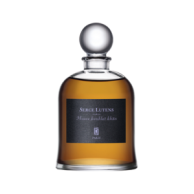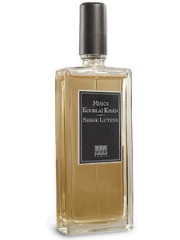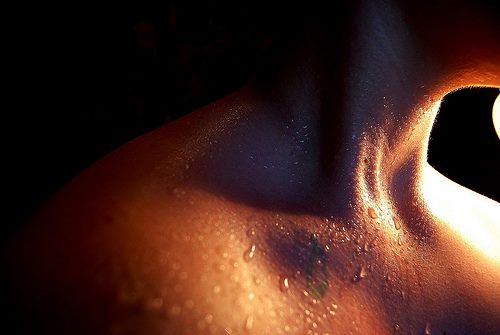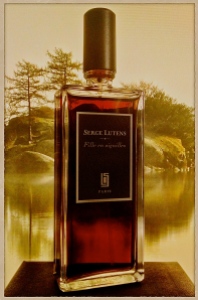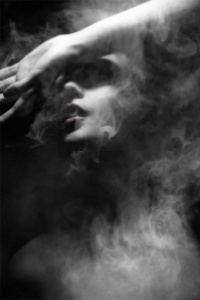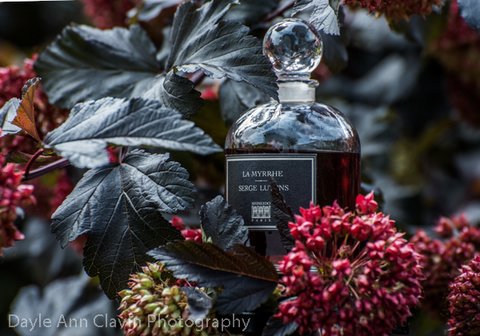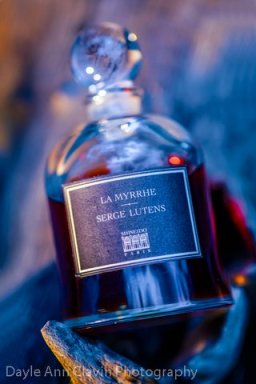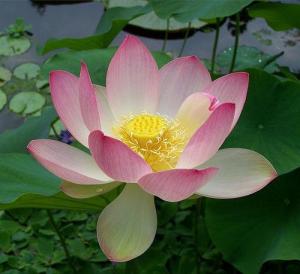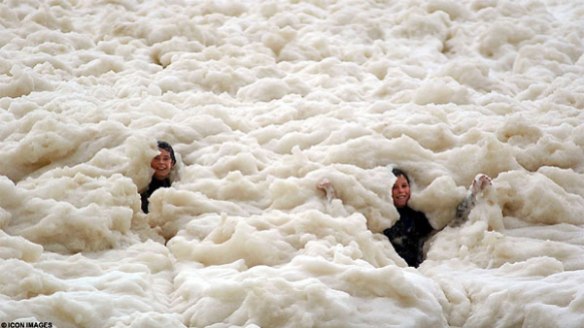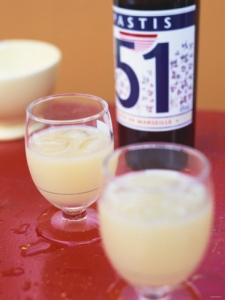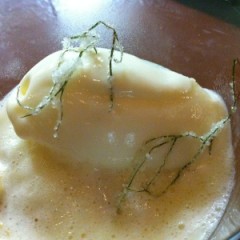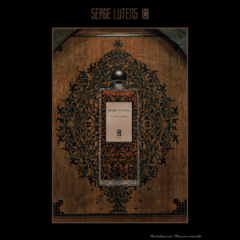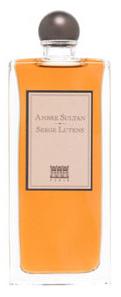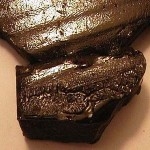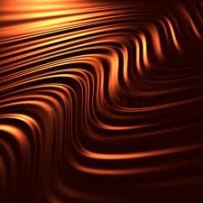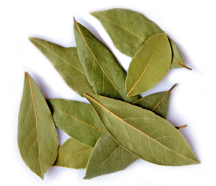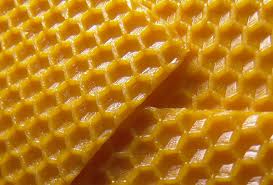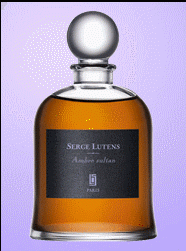Catherine the Great on horseback, riding to meet a young Cossack officer at a secret rendezvous where the lovers will tangle under Siberian furs before a roaring fireplace. Henry VIII seducing Anne Boleyn on more piles of fur on a winter’s night at a hunting lodge. The Sun King, Louis XIV, and one of his mistresses at Versailles, a palace redolent with the smell of the human body covered by powdered roses. The memory of riding my horse on a warm day, and the subtle aroma of his lightly musked, heated, muscular neck, mixed with the smell of the leather harness and saddle.

Special, limited-edition, rare bell jar bottle of Muscs Koublai Khan. Source: Serge Lutens Facebook page.
Those tangled thoughts and images are what cross my mind when I wear Muscs Koublaï Khan from Serge Lutens. Muscs Koublaï Khan (or “MKK” as it is often referred to for short) is a fragrance that always conjures up royalty in days long gone, along with fur and the memory of horses. It is an eau de parfum that I’d always wanted to try for very personal reasons. The tale in my family is that one side is a direct, linear descendant from the legendary Genghis Khan, leader of the Mongol hordes and the terror of both the Asiatic and the European plains. I’ve never bothered with genealogy and know nothing of its rules, so who knows how true it is, but I’ve always loved the story. So, a fragrance inspired by Genghis Khan’s grandson, Kublai Khan (or, as Serge Lutens writes it, Koublai Khan)? Clearly, it was something to try.
Then, I started reading about the famous Lutens creation — and I stopped in my tracks. Perhaps few fragrances come with such baggage. Horrified reactions abound on the internet, reaching such a crescendo of revulsion that any sane person would hesitate. From tales of crotch sweat, testicular sweat, camel feces, unwashed taxi drivers, and anal odor, to shuddering comments about how it would be socially unacceptable to go out in public reeking of Muscs Koublai Khan, the perfume has one of the most horrifying reputations around. I got a sample months ago but, every time I went to pick it up, I would think about “camel balls,” and I promptly put it back down again.
Imagine my disbelief, then, when I actually tried Muscs Koublai Khan and thought: “this is IT??? What’s all the fuss about?!” More to the point, I loved it. While I would never — ever — recommend MKK to someone just starting their perfume foray into niche brands or to anyone who isn’t a fan of animalic scents, I definitely think people who love musky Orientals and have some perfume experience should ignore the perfume’s reputation and give Muscs Koublai Khan a try.
Muscs Koublai Khan is an eau de parfum that was created with Lutens’ favorite perfumer, Christopher Sheldrake, and released in 1998. Though it was originally a Paris Bell Jar exclusive, American perfume buyers can easily find it in a regular 1.7 oz/50 ml bottle that is easily available and sometimes discounted online. In Europe, however, Muscs Koublai Khan is still limited to the Bell Jar format that is exclusive to Serge Lutens’ Paris headquarters, though I did find the smaller bottle available at one French online retailer.
“Le Grand Serge” describes Muscs Koublai Khan on his website as follows:
Valuable furs were spread for the Emperor of China to tread on, muddy boots and all.
Ultra-animalic musks and all kinds of tanned hides make a sensational debut in this fragrance. Pay no attention to their aggressiveness: once on the skin, they retract their claws in favor of padded paws.
Fragrantica classifies Muscs Koublai Khan as a “chypre,” which I think is odd, and says that the notes consist of:
civet, castoreum, cistus labdanum, ambergris, Morrocan rose, cumin, ambrette seed (musk mallow), costus root and patchouli.
Muscs Koublaï Khan opens as sweet amber, mixed with a slightly urinous, very musky edge. It feels just like warm, heated skin that is faintly dappled by a light sweat. The whole thing is sweet, sour, musky, just a little bit fetid, and a tiny bit dirty, all at the same time. But it truly doesn’t smell like stale body odor. A citric rose note, laden with rich, almost syrupy honey, peeps up from the musky amber base. There is just the faintest hint of a floral, rosy, vanillic powder sprinkled on top. Lovely flickers of sweetness come from the patchouli, and it mixes with the mildest, most minute touch of cumin. The whole bouquet sits atop the gorgeously plush, velvety warmth of the castoreum and the sweet nuttiness of the labdanum amber. It’s all sexy as hell, and significantly tamer than I had expected.
The ambered base is beautiful. It’s gloriously rich from the ambergris which, like the labdanum, is enriched by the warm plushness of the velvety castoreum, as well as by the naturally sweet muskiness of the ambrette seeds. That said, the ambergris doesn’t smell very concentrated or profound. It lacks the salty, wet, sweet, slightly sweaty muskiness of anything more than just a few drops of ambergris. At times, I wonder if it’s the real thing at all.
Perhaps the best — and, certainly, the most fascinating — part is the slightly urinous note from the civet. I realise that sounds odd and strange, and maybe you just have to be a really obsessed perfumista, but there is some appeal to that sour aroma. Just as really rich, really buttery food needs a dash of acidity to create a balance, so too does really rich perfumery. Here, the civet adds a really well-modulated edge that initially isn’t really like urine, but more like a sweet, little sour, almost vinegary, feline muskiness. To my surprise, it’s not rendered skanky or raunchy by the costus root which can sometimes take on a sharply feral aspect. (I likened its effects in Amouage’s Opus VII to “panther pee.”) Here, there is just the slightest musky dirtiness, perhaps akin to the smell of “dirty hair” that costus sometimes evokes, but it’s far from strong and certainly not over-powering. Still, I imagine that those who hate animalic notes in even the smallest dose will probably keel over from Muscs Koublai Khan’s combination of civet and costus.

“Red Orange Rose Yellow Abstract” by LTPhotographs, Etsy Store. (Link to website embedded within, click on photo.)
Ten minutes into its development, Muscs Koublai Khan radiates an unusual bouquet of richly sweet, lightly vanillic, almost citrusy, powdered rose mixed with the scent of a warm, musky body. The combination of the civet with the powdered rose and the amber keeps triggering thoughts of Bal à Versailles, the legendary scent whose vintage form sought to replicate the scent of aristocrats at Versailles who used strong floral powders to mask their lack of hygiene. It’s often said that courtiers at Louis XIV’s Versailles palace would relieve themselves in corners without the slightest hesitation, and that is another aroma that Bal à Versailles sought to recreate in its nuances. I wish I had a vintage sample to compare to Muscs Koublai Khan, but my memory tells me that Bal à Versailles was a much more extreme, raunchy, dirty, skanky proposition. Muscs Koublai Khan is much better balanced, and far, far less dirty. Furthermore, the urinous note from the civet and costus root is too mild and too sweetened to evoke the same aroma. And, just to be clear, nothing in Muscs Koublai Khan reminded me of a urinal.
Twenty minutes in, Muscs Koublai Khan becomes muskier in a more rounded way, taking on a velvety, smooth, deep quality that is as luxurious as it is sensuous. It really feels like the scent of warmed bodies under a cozy, thick, fur blanket. For all the talk about sweat or urinous edges, the thing that Muscs Koublai Khan truly evokes is the scent of skin itself. Not stale, sweaty skin, but skin that is heated and just barely sweaty from perhaps a romp under the sheets. Yes, the perfume has some animalistic tendencies, but nothing about it evokes testicular “ball sweat,” anal secretions, or fecal notes. Just heated bodies intertwined in intimacy.
By the same token, nothing about the cumin note makes me think of unwashed, stale body odor. In fact, the cumin is almost imperceptible on my skin which normally amplifies the note. It’s not even a millimeter like the rancid, wholly intimate, extremely dirty note of unwashed genitalia that it triggered in Vero Profumo‘s Rubj eau de parfum. Nor is it like the stale armpit sweat of Frederic Malle‘s Bigarade Concentrée. Granted, the cumin here is not the pure, dusty spice of something like Parfum d’Empire‘s Ambre Russe, but its muted, emasculated nature and the way it flickers just once in a blue moon in the background is hardly what I was expecting.
Muscs Koublai Khan remains relatively unchanged in its core essence for a large portion of its development. It is a beautifully sweetened rose scent flecked by vanilla powder and a citric, slightly urinous civet note, all atop a gorgeously plush, velvety, rich amber base that radiates the warmth of heated, musky skin. The notes fluctuate in prominence, intensity and strength, but Muscs Koublai Khan on my skin is primarily a musky amber fragrance with rose and vanilla. The civet note waxes and wanes, reaching its highest peak around the middle of the second hour where it definitely feels a little sharper than it did originally. Then, it becomes tamer, softer, and richer, perhaps thanks to the castoreum which casts out its warm tendrils to enrich everything it touches. There is also a subtle leathery undertone to Muscs Koublai Khan which becomes more noticeable at the end of the first hour and which feels a little raw at times. It, too, becomes gentler, sweeter, and warmer after a while, thanks to the amber’s plush embrace.

“Theequus” – photo by David Sinclair, via Crossed Wires Tumblr. (Website link embedded within photo.)
For all that the sophisticated elegance of Muscs Koublai Khan evokes historical figures covered by rich furs, it also calls to mind a more personal memory for me. Something about the overall combination of notes reminds me of riding. If you’ve ever been a horseman, you’ll know the aroma, especially after a gallop in the warm sun. The musky smell of a horse’s warm body, just lightly veiled by sweat, that is sweet but, yet, just a little sour as well. The soft heat of his muscular neck, combined with the faintest whiff of leather from the saddle and harness, all bundled up with a golden muskiness. That aroma is a subtle undertone of Muscs Koublai Khan for a brief time around the 90-minute mark and in an extremely mild form, even though the fragrance bouquet is primarily radiating the sweetest rose, its light touch of vanillic powder, and a plush, ambered base.
The overall combination is far too civilized and sophisticated to evoke the pillaging, raping, filthy brutality of the Mongol hordes. For me, one needs to go down a little later in history to a later Slavic legend, Catherine the Great, whose sensual appetites were almost matched by her passion for the hunt and for refined luxury. Muscs Koublai Khan would have very much suited the Great Catherine from its floral, vanillic rose that is powdered like her face, to the languid, feline heat of warmed bodies intertwined under blankets of the richest Russian furs.
Perhaps the most surprising change with Muscs Koublai Khan is how the volume quickly decreases to a purring hum. Less than forty minutes into its development, Muscs Koublai Khan seems to get a little blurry around the edges and the sillage drops quite a lot, though its smell is still extremely potent up close, thanks to the civet. At the end of the second hour, the perfume is so airy and lightweight that it feels far weaker than a hardcore oriental eau de parfum. In fact, Muscs Koublai Khan is far sheerer than I had expected. It lacks the opaque, baroque heaviness of Maison Francis Kurkdjian‘s ravishing Absolue Pour Le Soir, another animalic, musky, amber oriental fragrance but one which is, ultimately, night and day apart from Muscs Koublai Khan. Absolue Pour Le Soir is actually much dirtier than Muscs Koublai Khan, not to mention heavily spiced, more floral, and infused with almost as much beautiful sandalwood as it is with musk and amber. Muscs Koublai Khan is tamer, more linear, more muted, and much less complex, though it is beautiful in a very different way and perhaps more refined than the Absolue with its more hardcore, slightly beastly edge.
Muscs Koublai Khan soon starts to take on quite an abstract aura. At the start of the third hour, the fragrance is a soft, nebulous blur of amber, vanilla and quietly animalic musk. The flecks of a citric, civet-infused, and lightly powdered rose start to recede, slowly become less and less noticeable. By the start of the third hour, the rose is largely gone, leaving behind only an ambered, powdered, vanilla musk with a hint of civet. And there Muscs Koublai Khan remains for hours and hours, turning more and more abstract and amorphous. It soon loses the civet, becoming just an musky, powdery, sweet amber fragrance. Though Muscs Koublai Khan’s sillage hovered just above the skin for the second and third hours, its projection drops even more. (That said, I dabbed it on, and, apparently, it’s a very different issue if you spray Muscs Koublai Khan.) Around the sixth hour, the ambery perfume becomes a complete skin scent. By its very end, almost exactly 12.5 hours from its opening, Muscs Koublai Khan is just a hint of a sweetened, musky powder, and nothing more.
I think Muscs Koublai Khan — and the extreme reactions to it — need to be placed in context. For one thing, the average perfume user nowadays is used to a very different sort of musk in perfumery. Clean, white musks abound, and the extent of something ostensibly “dirty” is probably Narcisco Rodriguez‘s musk For Her. Muscs Koublai Khan is a whole different kettle of fish. Perfumes with civet (and even castoreum) are no longer common in perfumery, so people aren’t so exposed to what musk used to be all about when perfumes like Bal à Versailles and its cohorts celebrated the skank provided by civet, castoreum and real Tonkin deer musk. For animal cruelty and ethical reasons, many of those ingredients are no longer used and their scent has to be replicated through vegetal musks like ambrette seeds. I’m glad for that, but it does mean that exposure to a dirty sort of musk — even through vegetal recreation — can trigger a repulsed response in those who expect musk to have the modern, common characteristics of white, laundry-clean freshness.
Muscs Koublai Khan is not a perfume that I would recommend to everyone. Those who are brand new to perfumery may find the civet and musk accords repulsive. Those who are experienced perfumistas, but who feel that even the smallest drop of something animalic in their perfumes renders it unbearably “dirty,” will undoubtedly feel the same way. But those who adore true Orientals and who can appreciate some animalic nuances should absolutely try it. Don’t let Muscs Koublai Khan’s dangerous reputation keep you away. I think you will be like a lot of bloggers who have tried Muscs Koublai Khan and wondered: what is all the Sturm und Drang about?
Take, for example, the review at Pere de Pierre where the blogger clearly was prepared to be blown away by Muscs Koublai Khan’s terrible reputation:
Of all the “bad boy” fragrances, the outlaws, the ones whose whispered descriptions contain the words “unwashed” and “crotch”, often in succession, and sometimes with “of a Mongolian horseman after three days of burning, raping and pillaging” appended, it may be that none has a more salacious reputation than Muscs Koublaï Khän.
Thus, it was with great anticipation that I first pulled the stopper on a sample. Civet and castoreum? Bring it!
The first sniff of the vial seemed promising; yes, there was civet in there.
On application, though, it seemed much like Kiehl’s Musk Oil, a similarity that has been noted by many a reviewer before. A simple floral musk, nothing terrible or even animalic about it.
Fortunately, it did not take long before MKK began to develop, something that Kiehl’s does not ever seem to do, on me anyway.
MKK shuffled its accords and painted scenes with them. However, they were not dramatic, sharply pitched scenes of lust and conquest; they were more like dreamy landscapes with dark clouds scudding through a sky above shifting fields of roses and poppies. Sensual, yes, but more of a lazy Sunday afternoon lovers’ feast than a frenzied, climactic battle. […][¶]
In subsequent wearings, only once did the civet ever really raise its head, and it was glorious; I wouldn’t mind if it did it more often. But mostly, this is a sultry, sometimes even sweet, and floral musk.
Kiehl’s Musk is not the only fragrance to which Musc Koublai Khan has been compared. The other one is Frederic Malle‘s Musc Ravageur. I haven’t tried it yet, but the general consensus seems to be that there are differences. The blogger, The Candy Perfume Boy, did a comparison of the two fragrances, and his section on the Serge Lutens begins with: “I just can’t see what all of the fuss is about.” He found Musc Koublai Khan to be disappointing in its tameness, and not particularly filthy. As a gourmand lover, he far preferred Malle’s Musc Ravageur with its “edible” characteristics. On Fragrantica, one reviewer writes about the Lutens: “it’s similar to Musc Ravageur, but Koublai Khan is rounder and deeper (and more discreet) while MR is more playful and contemporary.”
Speaking of Fragrantica, one commentator clearly shares my experience with horses, writing in a review that I’ve reformatted only for the sake of trying to keep things shorter:
I fell in love with it. [¶] Maybe it will be easier for those of you who are familiar with horses to comprehend what I will try to describe.
First wave, it smelled like a horse with saddle and all that has been running a mile on a sunny summer day. Since I love horses and their smell, well, it didn’t bother me at all. Au contraire. [¶] It was musc and a bit sweet and also a bit “sweaty”. [¶] Then the dry down became very soft and almost powdery, almost buttery. In the middle of the composition I also smelled like hay and kind of what it would smell like when you walk in a wild field in summer.
So for me, that perfum is very comforting. [¶] The funny part is that my husband thinks the same as me when it come to the smell of this perfume. He says that it also smell “very clean”!? [¶] My best friend (women) love the first “snif” then she looked at me with a strange look on her face and she says that she also smell like “pee”?????!!!. And at last my best friend (man) told me it smells like baby powder!!
I think Musc Koublai Khan is all those things: sweetly horse-y (but in a really subtle, muted way), summery, almost clean in the sense that it evokes a person’s skin scent more than body odour, but with slightly urinous nuances, and sufficient powder that a handful of people may think it resembles baby powder towards the end.
The Non-Blonde, however, didn’t smell anything horsey about the fragrance at all. Her review talks about how clean it actually smells, but also cautions about over-application:
If you google Muscs Kublai Khan and dig enough, you would find colorful reviews, mentions of horses, genitalia and horses’ genitalia. Which is where I make the “whatcha talking ’bout?” face.
I cannot argue with the fact MKK smells “raw”, which probably translates to “animalic” for some. I’ve heard rumors of cumin, but I don’t get any at all. Quite the opposite, actually, if we agree that a cumin note in perfume represents the dirty and the sweaty. What I’m getting is actually clean, sweet and warm. The dirty part is not the scent itself, but the warm skin feel it evokes and all the things one might associate with a skin in this state. In his review for Perfume Smellin’ Things, my scent twin Tom called it “clean bodies in compromising positions”, and that’s exactly right.
[…] On my skin it’s a thing of beauty and has nothing to do with the great unwashed. It’s also incredibly strong and persistent, even after the big show of the ultra sweet top notes fades away.
It’s so strong, actually, that anything more than a couple of dabs can get extremely distracting. Over apply and you will keep smelling MKK, thinking about MKK, feeling MKK. It will occupy your thoughts in a NSFW way, so be careful. Another word of warning: Muscs Kublai Khan is meant to be dabbed and not sprayed. I’m saying this as someone who prefers to spray just about anything and regularly decants parfum extracts into mini atomizers. I did the same with MKK and it’s just wrong. You don’t want to cover a lot of skin with this, and spraying releases way too much.
You may think all this gushing and raving is bias from bloggers who are Lutens groupies, but that would not be true. Take the blogger, Pour Monsieur, who says he flat-out hates Lutens fragrances, and finds “them overly complex, pretentious and unwearable.” Yet, he writes that “Muscs Koublai Khan is the one huge exception, and is truly a special scent. It is the best musk fragrance in the world, hands down.” [Emphasis added.] In his review, he explains why:
This is more “body smell” rather than “body odor”. It reminds me of the smell of sweat on clean, warm, tanned skin.
It’s a complex scent, but not the ego trip of the other Lutens fragrances I’ve tried. The sense of perfect balance and complexity in Muscs Koublai Khan is amazing, and makes it so comforting to wear. It smells like there are several different types of musk used in MKK – light, heavy, white, dark, etc.. They’re all unified by soft floral and herbal notes, which add depth to the scent and prevent it from smelling like someone’s asshole. […][¶]
Muscs Koublai Khan is not only the most wearable Serge Lutens perfume I’ve ever smelled. It’s perhaps the most wearable scent I’ve ever worn, period. This is a fragrance, more than any other I’ve tried, that absolutely must be worn on skin, and that’s because it smells like skin. When you wear this, it becomes a part of you, smelling like it’s part of your body. It’s both extremely masculine and extremely feminine, depending on who’s wearing it, and it melds itself to its wearer. I can’t imagine Muscs Koublai Khan smelling unsuitable on anybody. So it’s both daring and suitable for anyone. Think about what an incredible acheivement that is for a perfumer.
I don’t agree that Muscs Koublai Khan is the most wearable Lutens, but I think many of his other points are true.
I’ve spent all this time covering other people’s assessments of Muscs Koublai Khan’s tameness for a reason. The horror stories don’t always apply, and it’s not just me with my heavy bias towards Orientals and my love for Serge Lutens. Even those who can’t stand Lutens fragrances think this one is special. And I’m definitely not alone in finding all the Sturm und Drang about MKK’s supposed terrors to be very different from the reality on one’s skin. But I cannot repeat enough, this is not a perfume to try if you’re looking for something totally clean and without the slightest bit of animalic edge. Laundry-fresh it is not! And if you’ve never encountered civet or are new to niche perfumery, then you may be in for a shock. In fact, I suspect you’ll think it smells of poo.
However, for those who adore Orientals and have some perfume experience, I beg you not to believe all the stories about Muscs Koublai Khan, and to give it a test sniff. Uncle Serge is completely right when he says: “Pay no attention to [the musks’] aggressiveness: once on the skin, they retract their claws in favor of padded paws.” It’s very true, and that’s why I’d wear Muscs Koublai Khan in a heartbeat if I had a bottle. The perfume has enormous sexiness (the Non-Blonde is right in saying it triggers NSFW thoughts or images), and a sort of fascinating, raw animal magnetism that is simultaneously very refined as well. Muscs Koublai Khan is also totally unisex, and has great longevity. Lastly, for U.S. buyers, it is easily available — and often at a discount, in fact — so there are no accessibility barriers.
So, try it and, when you do, I doubt that you’ll think of the ravaging, filthy Mongol hordes. But your thoughts may not be totally clean, either….


